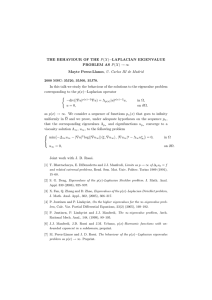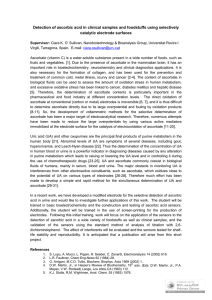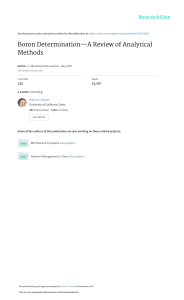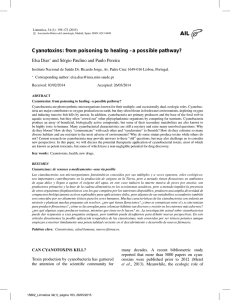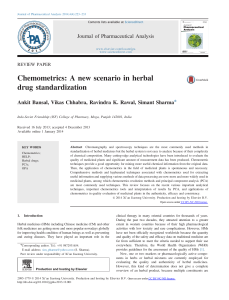Hypertrophic myopathy of the internal anal sphincter: a rarely
Anuncio
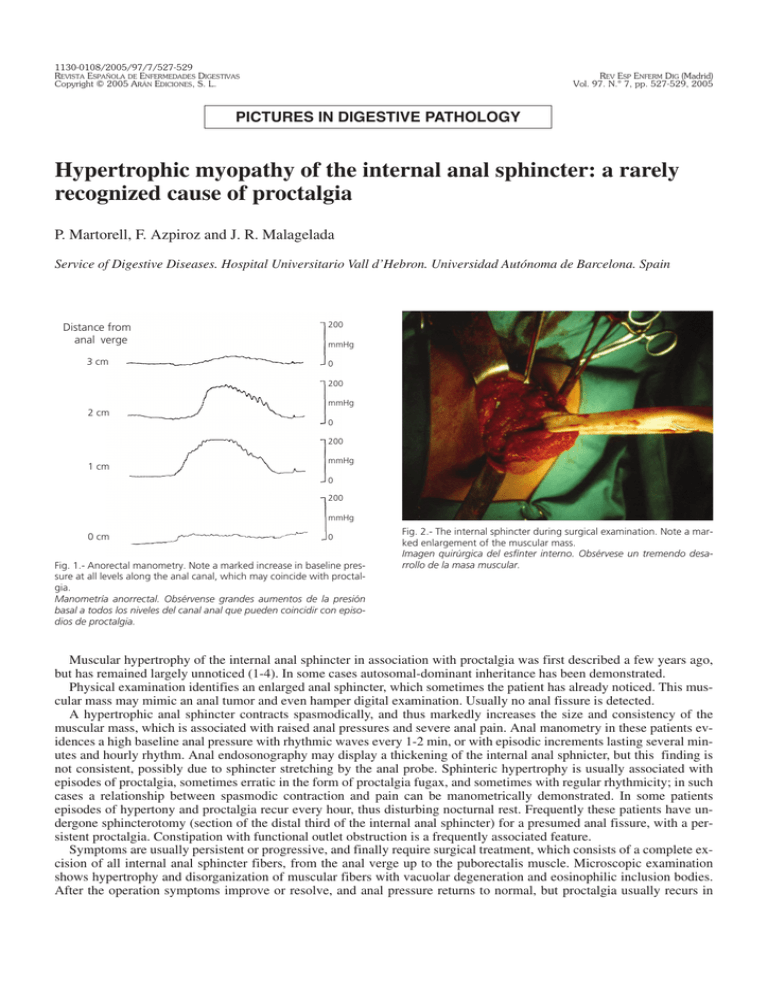
1130-0108/2005/97/7/527-529 REVISTA ESPAÑOLA DE ENFERMEDADES DIGESTIVAS Copyright © 2005 ARÁN EDICIONES, S. L. REV ESP ENFERM DIG (Madrid) Vol. 97. N.° 7, pp. 527-529, 2005 PICTURES IN DIGESTIVE PATHOLOGY Hypertrophic myopathy of the internal anal sphincter: a rarely recognized cause of proctalgia P. Martorell, F. Azpiroz and J. R. Malagelada Service of Digestive Diseases. Hospital Universitario Vall d’Hebron. Universidad Autónoma de Barcelona. Spain Distance from anal verge 3 cm 200 mmHg 0 200 mmHg 2 cm 0 200 1 cm mmHg 0 200 mmHg 0 cm 0 Fig. 1.- Anorectal manometry. Note a marked increase in baseline pressure at all levels along the anal canal, which may coincide with proctalgia. Manometría anorrectal. Obsérvense grandes aumentos de la presión basal a todos los niveles del canal anal que pueden coincidir con episodios de proctalgia. Fig. 2.- The internal sphincter during surgical examination. Note a marked enlargement of the muscular mass. Imagen quirúrgica del esfínter interno. Obsérvese un tremendo desarrollo de la masa muscular. Muscular hypertrophy of the internal anal sphincter in association with proctalgia was first described a few years ago, but has remained largely unnoticed (1-4). In some cases autosomal-dominant inheritance has been demonstrated. Physical examination identifies an enlarged anal sphincter, which sometimes the patient has already noticed. This muscular mass may mimic an anal tumor and even hamper digital examination. Usually no anal fissure is detected. A hypertrophic anal sphincter contracts spasmodically, and thus markedly increases the size and consistency of the muscular mass, which is associated with raised anal pressures and severe anal pain. Anal manometry in these patients evidences a high baseline anal pressure with rhythmic waves every 1-2 min, or with episodic increments lasting several minutes and hourly rhythm. Anal endosonography may display a thickening of the internal anal sphnicter, but this finding is not consistent, possibly due to sphincter stretching by the anal probe. Sphinteric hypertrophy is usually associated with episodes of proctalgia, sometimes erratic in the form of proctalgia fugax, and sometimes with regular rhythmicity; in such cases a relationship between spasmodic contraction and pain can be manometrically demonstrated. In some patients episodes of hypertony and proctalgia recur every hour, thus disturbing nocturnal rest. Frequently these patients have undergone sphincterotomy (section of the distal third of the internal anal sphincter) for a presumed anal fissure, with a persistent proctalgia. Constipation with functional outlet obstruction is a frequently associated feature. Symptoms are usually persistent or progressive, and finally require surgical treatment, which consists of a complete excision of all internal anal sphincter fibers, from the anal verge up to the puborectalis muscle. Microscopic examination shows hypertrophy and disorganization of muscular fibers with vacuolar degeneration and eosinophilic inclusion bodies. After the operation symptoms improve or resolve, and anal pressure returns to normal, but proctalgia usually recurs in 528 P. MARTORELL ET AL. REV ESP ENFERM DIG (Madrid) case of an incomplete section of all muscular fibers. Malignization has never been described. Sphincterotomy may produce some degree of incontinence, which usually responds to biofeedback treatment. In conclusion, in patients with proctalgia this entity should be kept in mind, particularly if pain presents with some rhythmicity. An enlarged anal mass is a key finding. Anorectal manometry usually demonstrates a marked anal hypertony, and if the patient develops episodes of proctalgia during the test, a further increment in anal pressure can be seen paralleling anal pain. With these data a tentative diagnosis can be established. If symptoms persist, a complete sphincterotomy is indicated, with sampling of tissue specimens for pathological diagnosis. Conceivably, this entity may be in the future more frequently recognized as a specific and treatable cause of proctalgia. REFERENCES 1. 2. 3. 4. Kamm MA, Hoyle CHV, Burleigh DE, Law PJ, Swash M, Martin JE, et al. Hereditary internal anal sphincter myopathy causing proctalgia fugax and constipation. A newly identified condition. Gastroenterology 1991; 100: 805-10. Martin JE, Swash M, Kamm MA, Mather K, Cox EL, Gray A. Myopathy of internal anal sphincter with polyglucosan inclusions. J Phatol 1990; 161: 221-6. Celik AF, Katsinelos P, Read NW, Khan MI, Donnelly TC. Hereditary proctalgia fugax and constipation: report of a second family. Gut 1995; 36: 581-4. Guy RJ, Kamm M, Martin JE. Internal anal sphincter myopathy causing proctalgia fugax and constipation: further clinical and radiological characterization in a patient. Eur J Gastroenterol Hepatol 1997; 9: 221-4. REV ESP ENFERM DIG 2005; 97(7): 527-529
